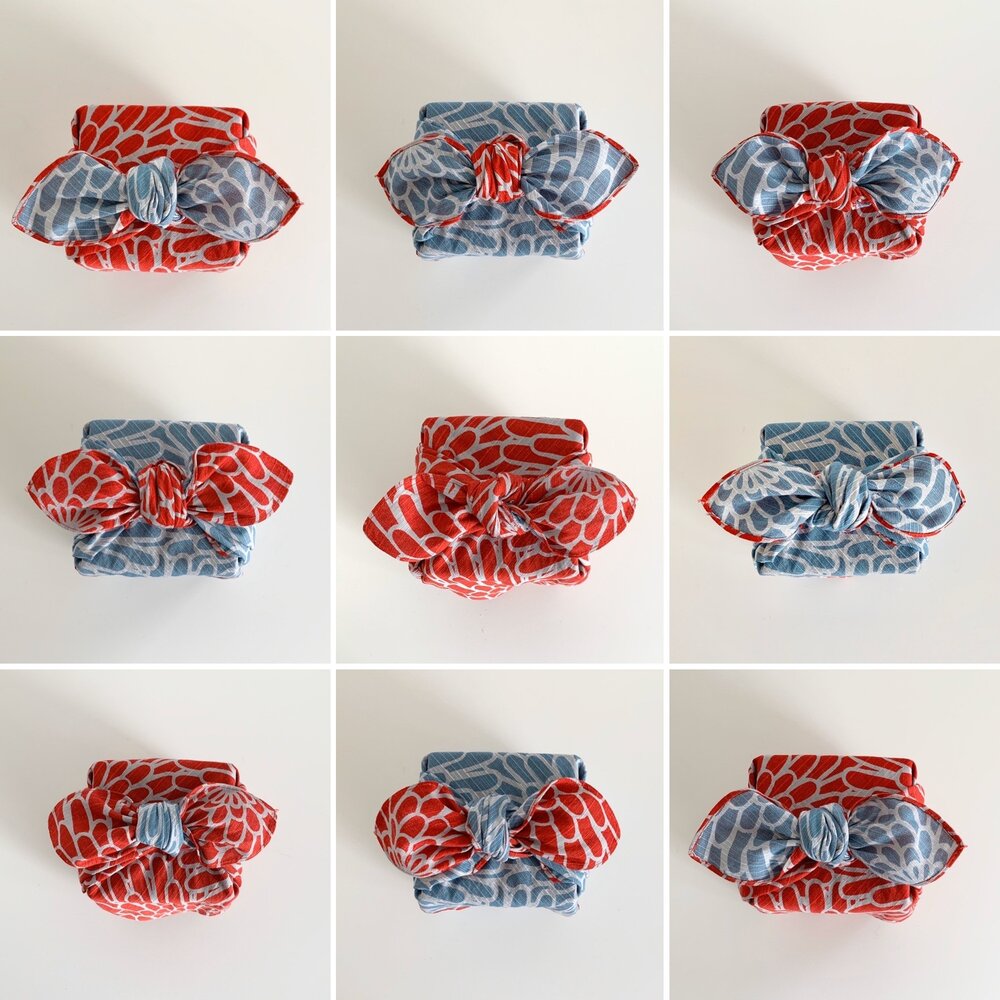
Cloth-Wrapping: The Gift that Keeps on Giving
Fresh foliage, beautiful blooms and longer, sunnier days... the magic of spring ignites feelings of renewal, hope and joy. Vernal celebrations like Mother’s Day and Easter return, and so does the hunt for a perfect gift. But what about the perfect gift... wrap?
In the UK, we throw away approximately 227,000 miles of wrapping paper every year. Enough to stretch from the Earth to the Moon! To make matters worse, not all wrapping paper can be recycled, especially if it is laminated with plastic or has added foil or glitter.
The popularity of wrapping paper, now a $3 billion industry in the USA alone, is often attributed to the Hall brothers, of Hallmark fame. In 1917, in their Kansas City stationery store, they started substituting the tissue paper used for wrapping with envelope liners from France, which became an instant hit with customers. By the late 1960s, Hallmark was manufacturing name-brand gift wrap and bows and employing stylists to demonstrate gift wrapping techniques.

Psychologists suggest that the act of gift wrapping can put you in a good mood. Additionally, several studies have found that spending money on others promotes happiness. From a neuroscience perspective, the rewarding “warm glow” that we experience with gift giving comes from the release of oxytocin in the brain, a hormone that promotes positive feelings of trust, safety and connection. No wonder it’s so hard to shake our disposable gift-wrapping habit…
Interestingly, decades ago, we used to wrap gifts with brown shipping paper, newspaper, or even fabric. In Japan, cloth wrapping is still widely used today. Also known as furoshiki, it dates back more than 2,000 years: first used to protect precious items during transport, it became more widely used around the 12th century to carry clean clothes to the public bath – the word literally translates to “bath spread”. Eventually, furoshiki would be used for carrying food, gifts and could even be turned into bags.

Also known as the “infinite cloth”, this square piece of fabric can adapt to any object shape using only origami-like folding techniques and knots – no additional adhesives or accessories required. Incredibly versatile, furoshiki is an elegant alternative to single-use packaging, enhancing a thoughtful gift with extra care and respect. It is also the perfect embodiment of mottainai, the Japanese concept of “waste not, want not”, rooted in ancient Buddhist beliefs.

Choosing the best fabric for your furoshiki will depend on the item you are wrapping. Sturdier, thicker fabrics like cotton can be handy for heavier items, while finer fabrics like silk will be perfect for small, delicate or precious items. Buy a few meters of fabric you love, then cut and hem squares by hand or machine – or for a touch of rustic chic, simply leave the edges to fray.
If you love print, embrace maximalist floral patterns from Liberty, William Morris at Home or House of Hackney. At HoH, fabrics are all made in England from organic and / or recycled cotton – and with some designs, every meter sold allows HoH to purchase and protect 35 square meters of forest, thanks to a partnership with the World Land Trust.
You could also visit a charity shop or vintage store to purchase a few second-hand scarves. To ensure your furoshiki can be reused for a very long time, be sure to check for rips, holes, pulls, stains or faded patches.

In fact, stocking up on vintage scarves is exactly how high street beauty retailer Lush first introduced knot wrapping, their own version of furoshiki, to the business in 2009. Now partnering with re-wrap, a non-profit organisation in India, their Knot Wraps are made from 100% organic cotton and feature an incredible array of colourful designs. They are still sold today, and a quick search on Vinted reveals more than 135 second hand archive designs ready to be snapped up.
Do try cloth wrapping this year. It’s the perfect way to indulge your love of fabric, while elevating your eco-friendly gift-giving game with a two-in-one present. Happy gifting!
 Page 12, Selvedge Issue 26
Page 12, Selvedge Issue 26
Words by Johanne Bertaux-Strenna
-
Further Information:
Image Credits:
Lead image: Art of Furoshiki
2/ Art of Japanese Gift Wrapping
3/ Suzy Quilts
5/ Lush
